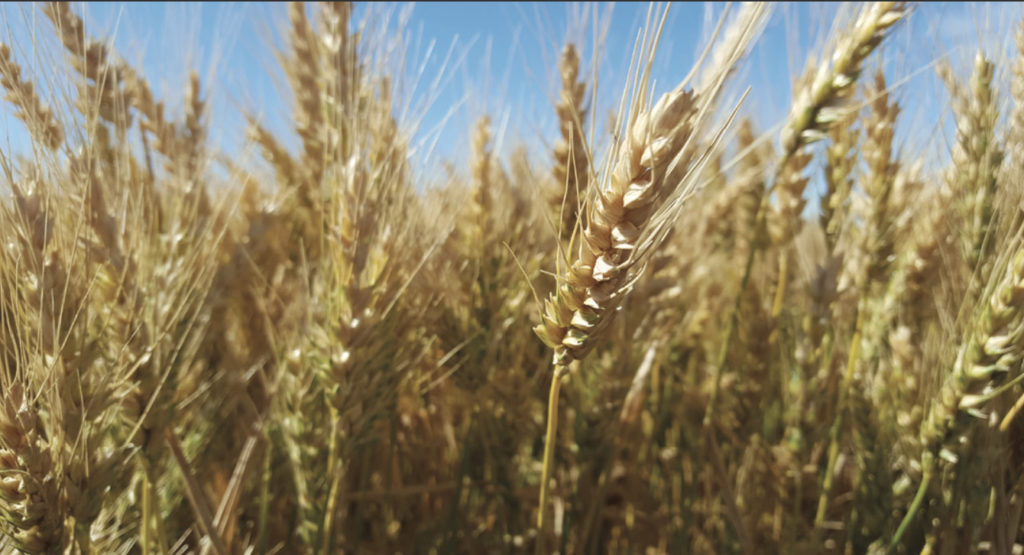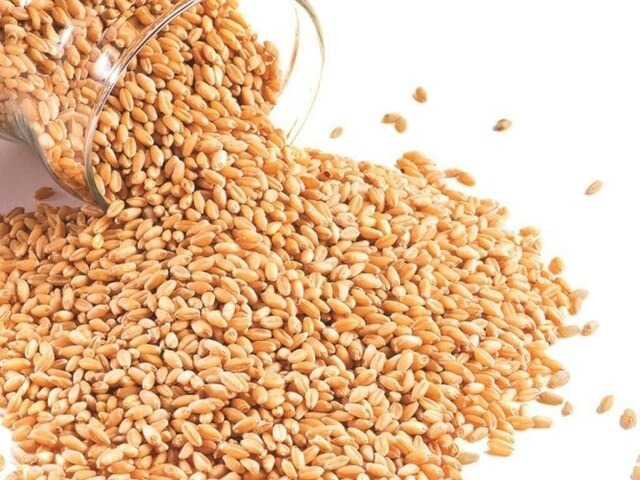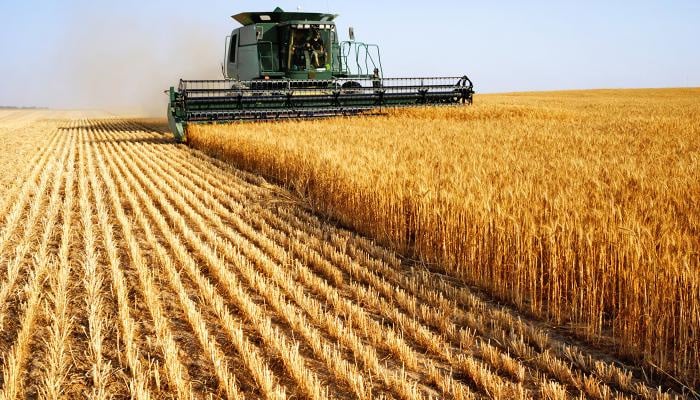THE WHEAT COMPAIGN IN PAKISTAN, 2022

Wheat is our essential diet and the major resource of calories. Our food intake stays incomplete without a wheat chappati (bread). Considering 125 kg a year, we take more than 30 MMT (million metric tons) of wheat to feed our recent population of 220 million, instead of about 2 MMT for our fellow citizens.
The political economy of the country turns around a reasonable supply of wheat flour.So, No need to mention, the subsidized principal is provided without unfairness to all societies (a five-star hotel or a tandoor in a slum). More than $2 billion have been paid on wheat importations during the past 20 months.
Our wheat production from 21/ 22 million acres has deteriorated around 26-27 MMT (a metric ton is 25 mounds). The wheat acreage has been decreasing due to competition with oilseed crops and is forced to decline further due to floods.
Basically, we have seen years of remarkable progress in wheat yields. The average productivity of pre-Green Revolution was 8 mound/ acre. After that, this moved up to 30 mounds/ acre. The current country average has remained around the figure; the progressive growers are reaping up to 50.
The experiment station average is 60-70 and the exhibited potential is >90. Inter-provincial and inter-district differences are present in earnings. Bahawalnagar, wastewater-stressed strict, for instance, has an average earning of 38 muds/acre while a rich sweet water zone district of Narowal generates 23 muds/acre. The yield figure across the river from Narowal on the Indian side is 50.Therefore, we cannot break down without focusing on the causes of such inequalities in yields.
The variation in output is largely unsatisfactory acceptance of technology. That consist of timely agronomic operations (sowing and irrigation, fertilizer, and weedicide applications) in the right amounts. A crucial component is the choice of crop selection and seed quality (purity, germination, and vigor). While the technology ‘off-the-shelf’ is satisfactory to break the stagnation, many times recognition is unnecessary. The market profitability ( value), including the minimum support price (MSP), promote wider acceptance of technology.

The maize crop achievement is a case of ‘scale neutral’ technology acceptance catalyzed by the market. The implementation of technology in rice is also taking place fast. That change has arisen for wheat. The statement of Rs 4,000 per 40kg as the minimum support price (MSP) by the Sindh province is a ‘watershed moment.
On October 28, the Wheat Campaign 2022 started. It is progressing through November. It is a result of the Wheat Campaign-2021 which was highly valued. The University of Agriculture, Faisalabad, joined hands with the Punjab government’s Agriculture Extension Wing. The other two agriculture universities in the province and colleges also took part in it. There were over 50,000 students in the field for 10 days, going door to door, repeating the areas of our food security challenge. The academic activity on the campus was delayed and more than 1,000 faculty and staff were also in the field. The political leadership was on board across party lines.
Think about the population challenge, competition for crops, and import of vital products, feeding the people with wheat alone may not work for long. We are supporting the idea of differentiating food intake. The tendency for a higher intake of rice is noticeable.
The point is to grow more wheat to reduce the import of the essential staple. That can happen if we control the spreading time within November, use excellent seed, drill the seed instead of transmitting, and ensure the fair use of fertilizer and the right time of weedicide function and irrigation. Late sowing, beyond November 20, is known to cause 15-20 kg yield losses per acre with time.
The campaign route has been full of activities, i.e. road shows, corner meetings, farm shows, education of women by women, and large gatherings at district and tehsil levels. Nearly 50 percent of the promoters were female students. Each student was given survey tools to collect data to make the expedition fruitful. The benefit is both ways; the farmers are educated and there is experimental learning for the students. We intend to prepare students with satellite image testing as a follow-up to their expeditions.

A lesson is that the farmers are eager to improve their lot but face several restraints. The farmers complain about the lack of machinery, and prices of diesel oil, seed, and fertilizer but there is barely a voice heard about the lack of status. So, the farmers have loosened their hearts on the delivery of official credit and are satisfied with the costly informal sources.
Wheat is implanted in succession after rice, cotton, sugarcane, maize, and Kharif fodders. Planting in the rice belt is postponed due to a lack of machinery to handle the plant deposits and limitations on burning. In November’s first week, 90 percent of rice was reaped in the Hafizabad district and fields were ready for wheat planting while at the same time 90 percent of the rice crop was yet to be reaped in the nearby Narowal district.
The planting in the Vehari district will be postponed because of the restoration of cotton and the very costly last picking. The planting in the sugarcane fields is subject to the starting of cane crushing by the sugar mills. A remarkable difference in research structure is observed between north-central Punjab and south Punjab. Lahore, Gujranwala, and Gujrat divisions need research facilities. South Punjab is an agriculturally better-served region than the other corners of the country.

Wow, incredible blog layout! How long have you been blogging for?
you make blogging look easy. The overall look of your web site is
wonderful, as neatly as the content! You can see similar here sklep online
Несомненно свежие новости мировых подиумов.
Актуальные эвенты мировых подуимов.
Модные дома, торговые марки, высокая мода.
Свежее место для трендовых хайпбистов.
https://ullafashion.ru/
https://ullafashion.ru/
Абсолютно важные новинки моды.
Абсолютно все мероприятия всемирных подуимов.
Модные дома, лейблы, haute couture.
Новое место для модных людей.
https://gucci1.ru/
https://gucci1.ru/
Несомненно свежие события мировых подиумов.
Исчерпывающие мероприятия мировых подуимов.
Модные дома, торговые марки, haute couture.
Свежее место для стильныех хайпбистов.
https://balmain1.ru/
https://balmain1.ru/